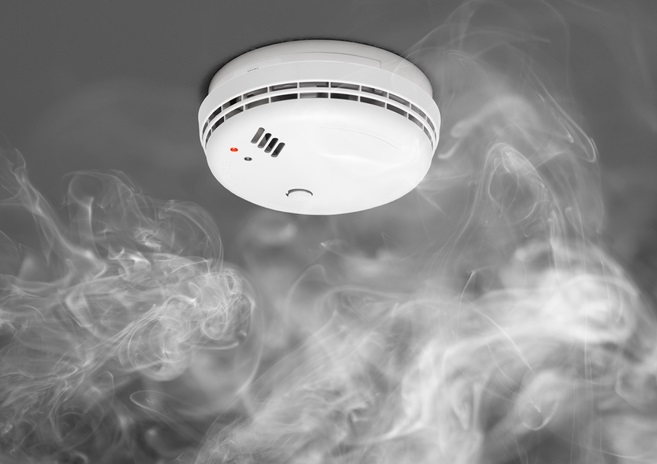Fire Safety in the Home
Reading time: 4 minutes
What are the different types of smoke alarms?
- Ionisation
- Optical
- Heat
- Combined Optical Smoke and Heat Alarms
- Battery Powered Alarms
- Mains Powered Alarms
Which smoke alarms should you choose, and where should they be fitted?
It’s recommended to have at least one smoke alarm on each level of your home, and the best place to fit your alarm is on the ceiling in the middle of a room, and in a hallway or landing area.
Depending on where you want to place your alarm, some smoke detectors aren’t suitable for use in every room in the home. For example, certain types can’t be placed in the kitchen or a bathroom because smoke and steam could set them off.
See the below breakdown of rooms in the home, and which type is most suitable:
-
Kitchen: heat
-
Bathroom: multi-sensor
-
Hallway, landing and stairwell: multi-sensor, optical, ionisation
-
Bedrooms: multi-sensor, optical
-
Living room: multi-sensor, optical
-
Offices: multi-sensor, optical, ionisation
-
Garage: heat
Testing your smoke alarm
-
Battery operated: it’s suggested to test these at least once a month, and replace the battery every year. You can vacuum under the cover of your smoke alarm, with a soft-brush attachment, every few months to remove any dust that may interfere with the sensor.
-
10-year sealed: you should test these every month to make sure it’s working correctly. You will need to replace the unit at the end of its 10-year life, or when it starts to make a quiet beeping sound, this indicates that the batter is low.
-
Mains operated: the recommendation is to test them every month. If it starts to make a quiet beeping sound, it could mean the backup battery is going flat, so it’s an ideal time to change it.
If you are deaf or hard of hearing you can contact the Action on Hearing Loss Information Line on 0808 808 0123, textphone 0808 808 9000, or visit their website here.
If you need more information on which smoke alarm is best for you and your home or office, contact your local fire and rescue service for advice.
Disclaimer: The information contained on this page is intended as an overall introduction and is not intended as specific advice from a qualified professional. Travis Perkins aims to avoid, but accepts no liability, in the case that any information stated is out of date.





